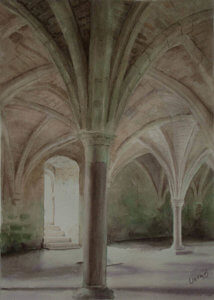Vera Billing’s pigmented painting
Vera Billing is a Swedish watercolour artist who draws her inspiration from the nature and more particularly the flora. Her special devotion for plant life goes back to her childhood when she was living in a mountain area, in the middle of Sweden. At that age she already became a little botanist and the wild plants became her best friends: Tussilago farfara above all was her best.
It is therefore not surprising that she is interested in the use of natural ingredients to paint her watercolours. The plant pigments she works with are prepared by her. They are mixed with gum arabic and honey.
Her technique which she compares with sculpturing consists in slowly adding small amounts of pigments in many thin layers and then softening edges and lifting to strengthen light.
Her paints made with these plant pigments seem a bit hoarse. They also need more binder that is gum arabic than unorganic pigments. According to the artist, the ARCHES® Watercolour 300 gsm paper, very absorbing, takes these pigments in very well and is perfect for her technique.
Examples of plant pigments
Chlorophyll

Reseda luteola

Cosmos sulphureus

Madder

Sorghum

Quebracho

Oak

Indigo

Cochineal purple

Charcoal








